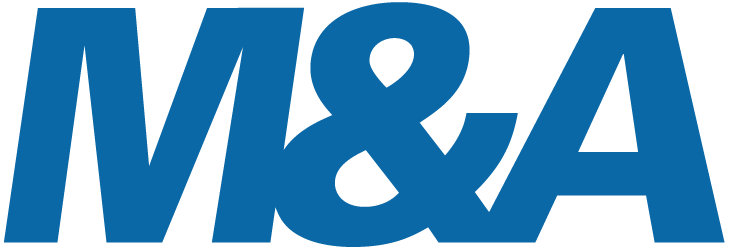Boards met sterk onderscheid in geslacht en leeftijd doen betere fusies en overnames

Managementteams met een sterk onderscheid in geslacht en leeftijd binnen de groep doen betere fusies en overnames. Dat is kort door de bocht de conclusie van wetenschappers Nouredyn el Sawy en Killian J McCarthy op basis van eigen onderzoek. Bedrijven moeten de ´faultline strength´ van hun bestuur versterken. Deze blog is geschreven in het Engels.
Door Nouredyn el Sawy en Killian J McCarthy
‘Faultlines’, as academics term them, are the invisible dividing lines – in terms of age, gender, experience, etc — along which a group splits into subgroups (Lau and Murninghan, 1998). In group situations, research shows that ‘faultlines’ matter because ‘faultlines’ impact the stability of the larger group. The question that we sought to answer in this research was: how does the presence of ‘faultlines’ in the board of directors affect the decision to merge, and its overall performance?
To test the hypotheses that faultlines matter, we first collected: (1) demographic data on the gender, age, title and experience of all of the board members; (2) for 55 pharmaceutical firms; (3) active in the period 2006-2014. Then, we collected data on the 225 acquisitions announced by these firms. Finally, we calculated the faultline strength (FLS) in each board, and investigated if the presence and strength of the faultline impacted merger performance. Several interesting conclusions emerged.
Overall faultline strength
First, we find that overall faultline strength does not impact the magnitude of the performance. In other words, stronger or weaker faultiness do not lead to better or worse performing deals. This suggests that strong demographic alignment in the board doesn’t matter for the size of the profit or loss.
Second, and looking at the occurrence of performance – in other words, splitting our sample of acquisitions into positive and negative performers – we find that the presence of faultlines positively impacts deal performance. In other words, boards with more obvious subgroups are more likely to be involved in positively-performing acquisitions, than boards with no obvious subgroups. This is surprising, as faultlines were initially expected to have a negative impact on performance.
Finally, and looking at the types of faultline – looking, for example, for gender, age, title and experience-based divisions – we find that certain types of faultlines impact deal performance, and others don’t. The age faultline, in particular, positively moderates M&A success and both gender and age faultlines increase the occurrence of positive performance. This suggests that boards with strong age and/or gender divisions, which leads for example to the formation of a ‘young’ and an ‘old’ subgroup, do better deals than boards without such divisions.
Unexpected outcomes
Our work showed a positive relationship between a stronger faultline and deal performance. In other words, the stronger the line between the groups – in terms of age, gender, experience, etc – the better the performance. This is a surprising outcome, as most faultline research suggests a negative impact on Top Management Team performance. So what makes the difference with boards of directors?
It may be that the nature of boards allows faultlines to be capitalized on. Perchance the fact that most boards consist of managers of considerable age, their large amount of work experience has prevented them from having petty conflicts. Furthermore, having two or three viewpoints (one for each subgroup) instead of a viewpoint for each team member may arguably facilitate the governing process, as decisions are gained faster and more easily.
Finally, Knippenberg et al. (2010) suggest, in the case of highly-shared objectives, having strong faultlines in your team is preferable for profitability, as the common objectives may diverting attention away from subgroupings. Since M&As are important for the organization as a whole, this may explain the outcome.
Managerial implications
So what to do with these findings? Research already shows that differences within the board improve performance: in other words, boards shouldn’t be composed only of white, grey-haired, old men.
What our research adds is the suggestion that intentionally creating subgroups – especially in terms of age and gender – and allowing for ‘young’ and ‘old’ groups, or ‘male’ and ‘female’ groups to form, can improve performance.
Our results show that at least 5% of the variance in performance is influenced by the existence of faultiness. In an industry where 65-85% of mergers fail, this is a significant contribution.
Attempting to increase the board’s faultline strength would, of course, be the next logical step. This can be achieved by increasing the team turnover, as the addition of new members allows managers to create and shape faultlines, which in turn are expected to improve performance.
However, as with most managerial decisions, one must consider the tradeoffs.
First, though stronger board faultlines may increase the probability of M&A success, they may be detrimental to other (less highly-shared) objectives of the firm. Furthermore, reaching for higher turnover would reduce team cohesiveness and morale. Finally, specifically selecting gender- or age-based minorities, simply to increase the strength of the faultline, reduces the degrees of freedom in the selection process of new members, where qualified people are in high demand.
References
Lau, C. D., & Murnighan, J. K. (1998). Demographic diversity and faultlines: The compositional dynamics of organizational groups. Acadamy of Management Review, 23, 325-340.
Knippenberg, D., West, M. A., Dawson, J. F., & Homan, A. C. (2010). Diversity faultlines, shared objectives, and top management team performance. Human Relations, 64, 307-336.
Over de auteurs
Nouredyn el Sawy is een master Finance student aan de University of Groningen. Hij behaalde zijn bachelor in International Business in 2013 en zijn master in Strategic Innovation Management in 2014, voor zijn onderzoek over de invloed van faultlines op het succes van overnames.
Dr. Killian McCarthy is assistant professor bij de University of Groningen. Hij behaalde zijn PhD in economics of corporate strategy in 2011, voor zijn onderzoek over overnameprestaties. In dit onderzoek evalueerde Killian de prestatie van 35,000+ deals in Europe, Noord-Amerika en Azië in de periode 1990-2010.









